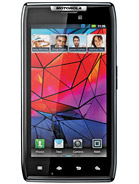
The iPhone 5 has a faster processor than the iPhone 4S and this is very noticeable when you use apps. They open straight away, without any lag. Web pages load faster too and the device came out way on top in GeekBench tests. The iPhone 5 scored around the same as its competitor, the Samsung Galaxy S3. Therefore if you want a handset that is lightning fast, then yes it is worth the upgrade.
The iPhone 4S already has a decent camera on both front and back of the device. The iPhone 5 has an 8 megapixel camera on the back and a 1.2 megapixel on the front that is capable of taking HD 720P video. There are noticeable differences with the back camera on the iPhone 5 to the iPhone 4S. The iPhone 5 can focus at shorter distances that the iPhone 4S cannot manage. If you want to use the camera on your phone as your only camera, then it may be worth the upgrade to the iPhone 5.
The iPhone 4S came with a 3.5 inch display with 960 x 640 resolution. However the iPhone 5 beats it with its 4 inch display and 1136 x 640 resolution with 326ppi. The iPhone 5 has a ratio of 16:9, which is superb when watching movies.
The iPhone 5 looks a lot like the iPhone 4S, with some great changes. The new iPhone is lighter and thinner. The iPhone 4S measures in at 115x59x9mm and weighs in at 137g and the iPhone 5 is 112g and measures only 123.8×58.6×7.6m, with just 7.6mm thickness. Some say that the new iPhone 5 is too light though. Both handsets are available in black or white.
The iPhone 5 comes with the latest iOS 6 pre-installed, but this is available for the iPhone 4S. However it can slow the older handset down and drain to the battery has been widely reported. Of course if you upgrade then you have to do without Google Maps.
One big change between the iPhone 4S and the iPhone 5 is the connector. On the old iPhone there is a 30 pin connector and on the new it is the Lightning connector. If you have older accessories these will not work with the new iPhone, unless you get a $29 adapter.
In conclusion the iPhone 5 is naturally the better of handsets, with many changes. It compares with just about every phone on the market at the moment, perhaps with the exception of the Samsung Galaxy S3 as they both have their strong merits. If you are due an upgrade on your iPhone 4S then it would be worth making it. However if you are still in contract you would have to consider whether the larger screen and faster processor are worth the price. Personally, if you’re not due for an upgrade then I would suggest waiting for the iPhone 5S. There are a lot of kinks to work on the iPhone 5 still with many such as the easily scuffed rear and the purple flare not possible to correct with a software update.
-380-75.JPG)
-580-90.JPG)
-580-90.JPG)
